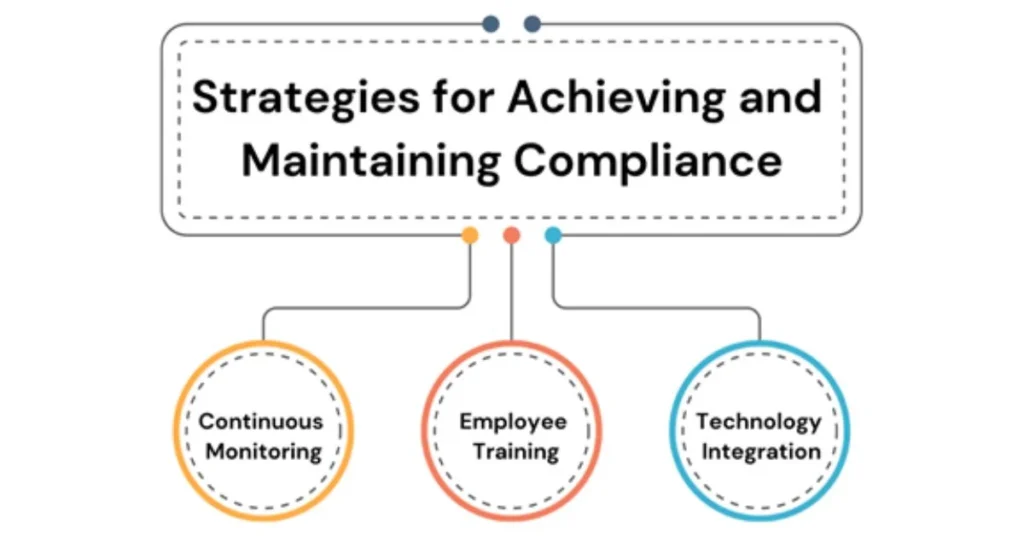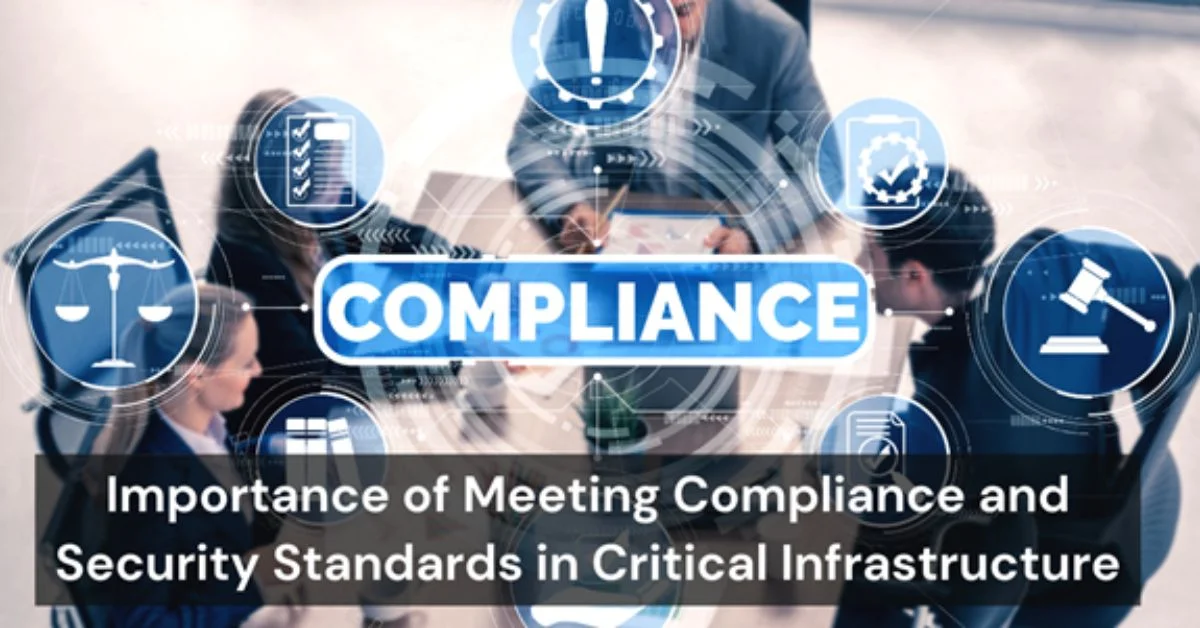Critical infrastructure is the backbone of modern life, powering such essential services as keeping a society thriving and an economy stable.
With cyber threats getting bigger and trickier, keeping these important systems safe has turned into a major priority. Sticking to security standards is nothing but building resilience, maintaining the confidence of the public, and ensuring services keep running.
Having NERC CIP compliance in place for such industries as energy is also very important. This makes it possible to secure the entire power grid against cyber risks since the bulk electric system has been secured.
This discussion unpacks why compliance and security are indispensable and explores strategies to shield critical infrastructure against ever-changing risks.
Compliance’s Function in Safeguarding Vital Infrastructure
Protecting critical infrastructure means proactively securing systems. Make use of robust security guidelines and efficient compliance procedures. These efforts keep essential services secure and reliable. They safeguard public trust and national stability.
- Regulatory Frameworks: We must follow rules like the NIST Cybersecurity Framework and CIRCIA. They protect our critical infrastructure. Guidelines state key security steps. They include spotting risks, catching threats early, and promptly reporting incidents. These can help reduce damage.
- Risk Management: Compliance is one of the principles for effective risk management. Structured guidelines ensure an organization finds vulnerabilities and prioritizes risks. Then, it can take steps tailored to those vulnerabilities. It also minimizes exposure to threats by improving security defenses.
For energy, following the NERC CIP standards is key. It safeguards the bulk electric system & the grid. Meeting these standards reduces cyber risks and stabilizes power systems. Also, focusing on industrial cybersecurity means our tech is well-protected. This stops disruptions and keeps vital systems safe. They support our daily lives.
Consequences of Non-Compliance
Meeting compliance and security standards in critical infrastructure is essential for maintaining the integrity and reliability of systems that our society depends on. These infrastructures play a pivotal role in sectors like energy, transportation, and telecommunications. Therefore, ensuring these systems meet established compliance and security standards is non-negotiable.
The consequences of not meeting compliance can be severe, extending beyond just financial losses:
- Legal and Financial Repercussions: Failure to comply with industry regulations can lead to heavy fines and legal action. Security breaches, stemming from non-compliance, can result in costly litigation, further damaging the reputation of the organization.
- Operational Disruptions: Non-compliance often leads to system failures or service outages, disrupting normal operations. This can impact everything from public safety to business continuity, causing a loss of revenue and a breakdown of public trust.
For energy industries, achieving NERC CIP certification is crucial to meeting security standards and mitigating risks. Organizations that maintain NERC CIP certification demonstrate their commitment to upholding the security of the bulk electric system and avoiding costly disruptions.
Enhancing Security Through Standardization
Meeting compliance and security standards in critical infrastructure is essential for ensuring these systems remain robust, reliable, and safe. With the rise of cyber threats, it’s more important than ever that organizations adopt standardized protocols to protect their systems and data.
Here’s how meeting security standards makes a difference:
- Uniform Security Measures: Standardized security protocols act as a cohesive defense, ensuring all parts of the infrastructure are protected in a consistent way. This uniformity makes it harder for attackers to find vulnerabilities and helps organizations respond quickly to any threats.
- Interoperability: When different sectors within critical infrastructure follow the same standards, communication and coordination between them become seamless. This interoperability is key for responding to emergencies and maintaining system integrity across multiple platforms.
NERC CIP cybersecurity provides a framework for securing critical systems against emerging cyber risks. Meeting NERC CIP cybersecurity standards ensures that energy infrastructures are not only protected from cyberattacks but can also operate efficiently across interconnected systems.
Case Studies of Compliance Impact
Meeting compliance and security standards in critical infrastructure is a vital part of keeping our systems safe and operational. The consequences of either meeting or failing to meet these standards are profound, especially when it comes to cyber threats.
Here’s how meeting compliance directly impacts security:
- Successful Implementation: When companies honor their security rules and compliance stuff, they usually succeed in thwarting cyberattacks or at least make them a lot less damaging. Good compliance habits have really helped block attacks by providing regular updates to systems, fixing vulnerabilities, and keeping unauthorized folks out.
- Failures Due to Lapses: However, on the other hand, nonadherence to policies has led to some pretty bad breaches. For instance, if security standards were not followed, sensitive information came out, or systems got hacked, people just lost trust.
NERC CIP regulations are super important for energy companies to keep those risks at bay. Following these rules makes sure that essential infrastructure is safe from cyber threats, which cuts down the chances of any nasty breaches happening.
Strategies for Achieving and Maintaining Compliance
Meeting compliance and security standards in critical infrastructure is key to maintaining safety, functionality, and trust. As cyber threats evolve, staying compliant is about proactively protecting essential systems.
Here’s how organizations can effectively achieve and maintain compliance:

- Continuous Monitoring: Regular audits and assessments help ensure ongoing adherence to security standards. By continuously monitoring systems, organizations can quickly spot potential weaknesses and take action before any serious breaches occur.
- Employee Training: Educating staff on compliance requirements and security best practices is crucial. Employees are often the first line of defense, and when they understand the importance of compliance and how to follow security protocols, the entire system becomes stronger.
- Technology Integration: Implementing advanced security solutions that align with security standards is essential for maintaining robust defenses. Leveraging the latest technologies helps organizations stay ahead of threats and ensures that their systems are always up to date with the necessary compliance standards.
Meeting NERC CIP requirements ensures that energy organizations are following the necessary protocols to protect the bulk electric system from cyber threats. By staying compliant with these stringent requirements, organizations help secure the critical infrastructure that powers entire regions.
The Future of Compliance in Critical Infrastructure
Meeting compliance and security standards in critical infrastructure is an ongoing effort, especially as technology and threats continue to evolve. As cyber risks grow more sophisticated, it’s essential for organizations to stay ahead of the curve to protect vital systems.
This is how compliance is expected to develop in the future:
- Evolving Threat Landscape: As new cyber threats come forward, compliance strategies must evolve. Companies cannot sit still; their security measures have to be stepped up to deal with these really complicated attacks, from advanced persistent threats to ransomware stuff.
- Regulatory Developments: Governments and other regulatory folks are dropping new laws and guidelines because of all the crazy cybersecurity risks popping up. It’s super important to keep up with these changes if you want to dodge fines and keep things secure.
The NERC CIP program is essential in keeping abreast with new threats and being compliant. It is only through the same program that one derives a firm framework within which critical infrastructure protection must be adhered to and changing needs in security are met.
Frequently Asked Questions (FAQs)
1. What are the pivotal standards of compliance for critical infrastructures?
Key standards include the NIST Cybersecurity Framework and sector-specific rules. NERC Critical Infrastructure Protection requirements are among them.
2. How do organizations understand that they are being compliant with shifting security standards?
To ensure compliance, the organization must require continuous monitoring. Regular training and updated awareness must also be necessary.
3. What if you are not adhering to the compliance and security guidelines?
It can cause legal trouble, lost money, and a damaged reputation. This is especially true if you fail a NERC CIP audit.
Bottom Line
Today, compliance and security in critical infrastructure are vital. It is the backbone of national resilience. Adopting these standards helps organizations. It strengthens defenses against threats. It ensures smooth operations. It maintains society’s trust.
We must follow Critical Infrastructure Protection standards. They are key to protecting systems that power our daily lives. They ensure we are ready for future challenges.
By staying ahead, organizations help protect their operations and our communities’ security.
For more information click here.









